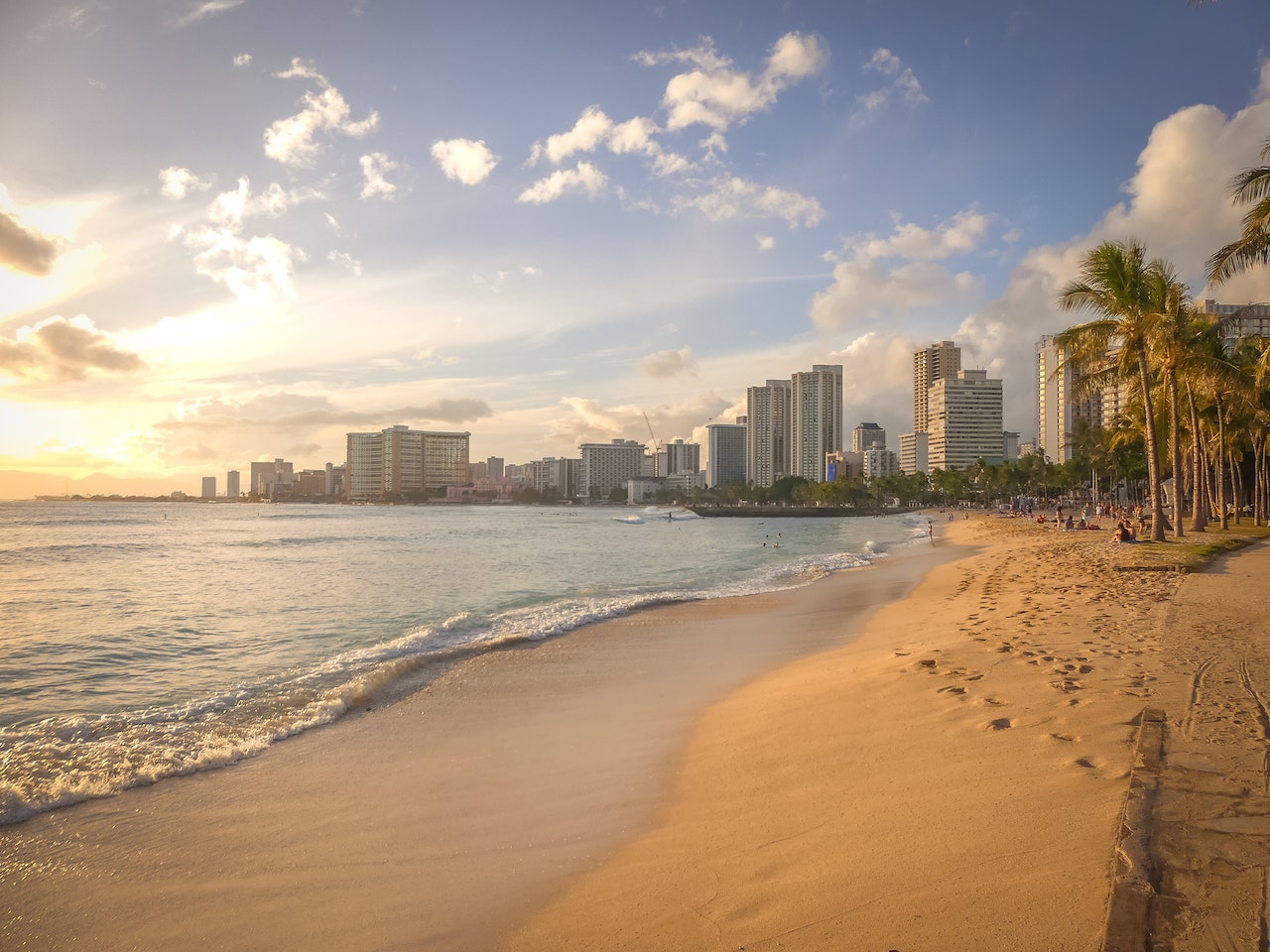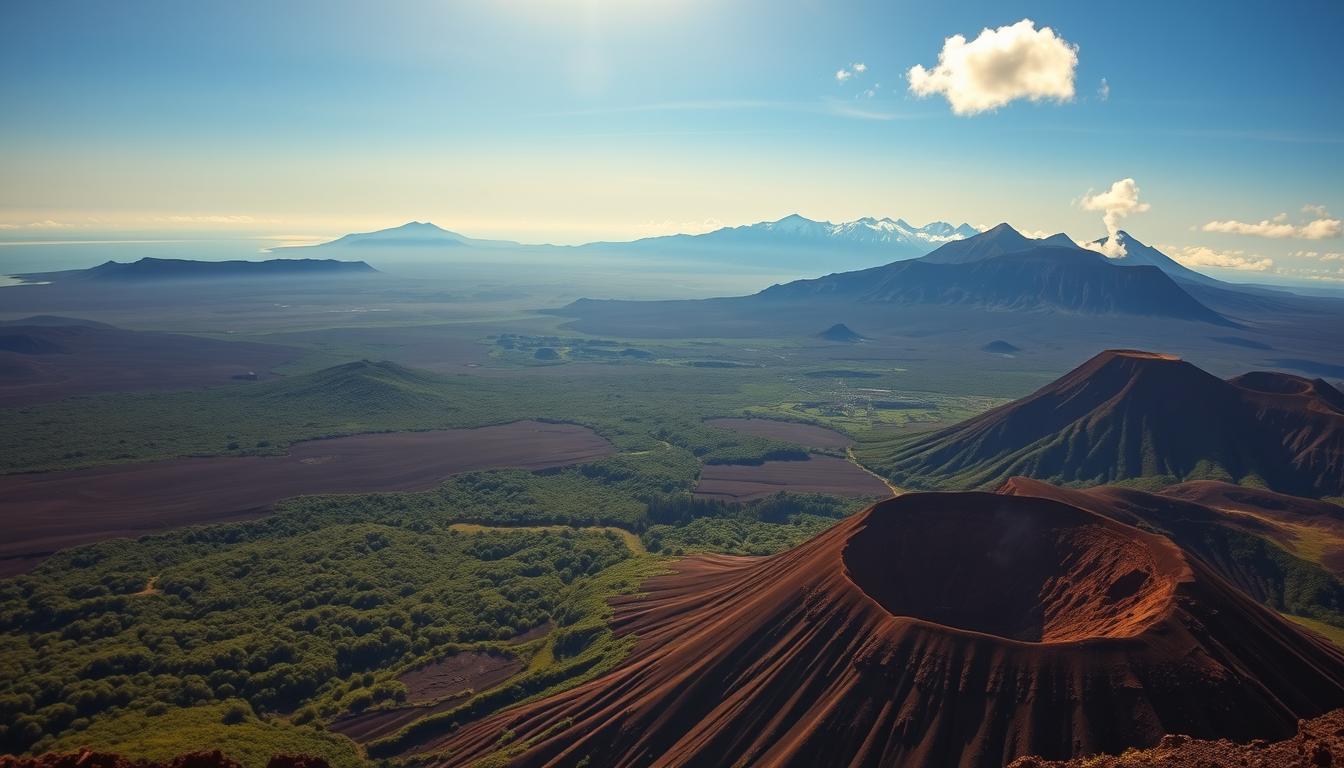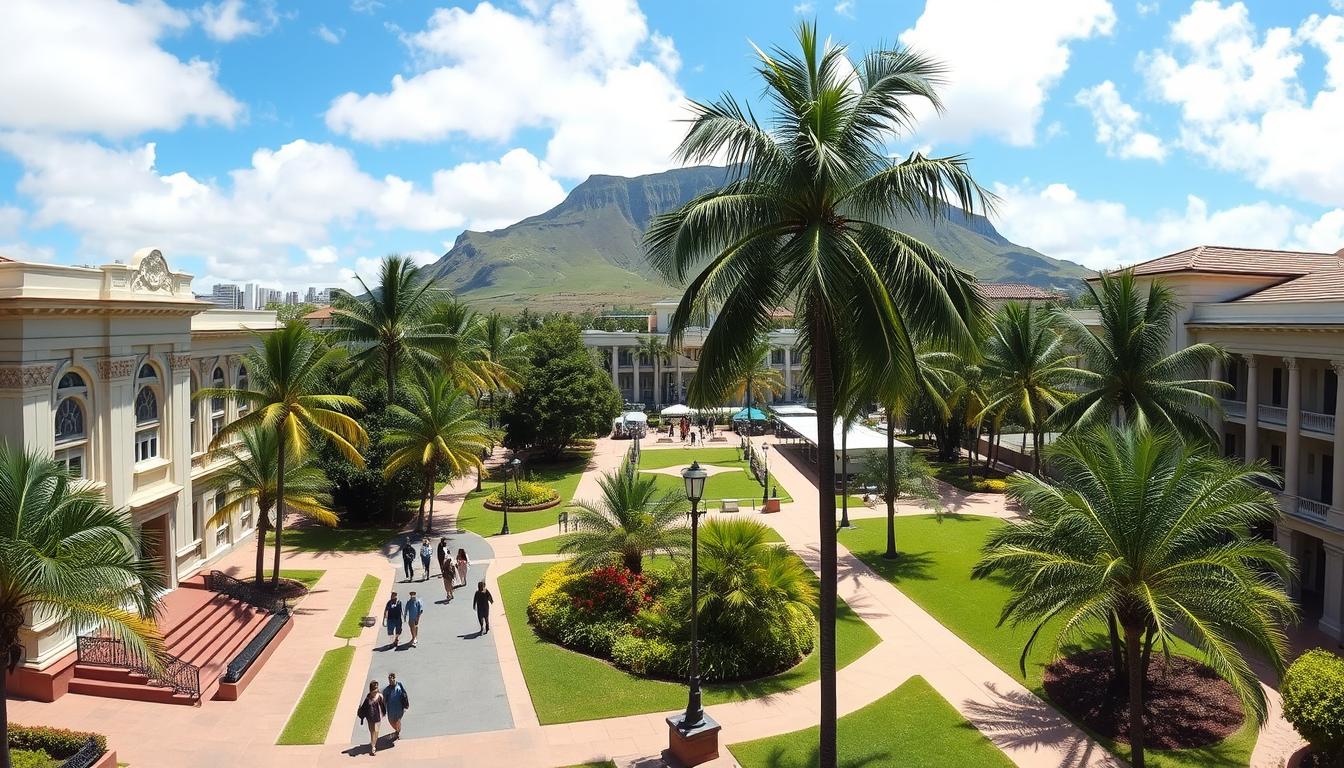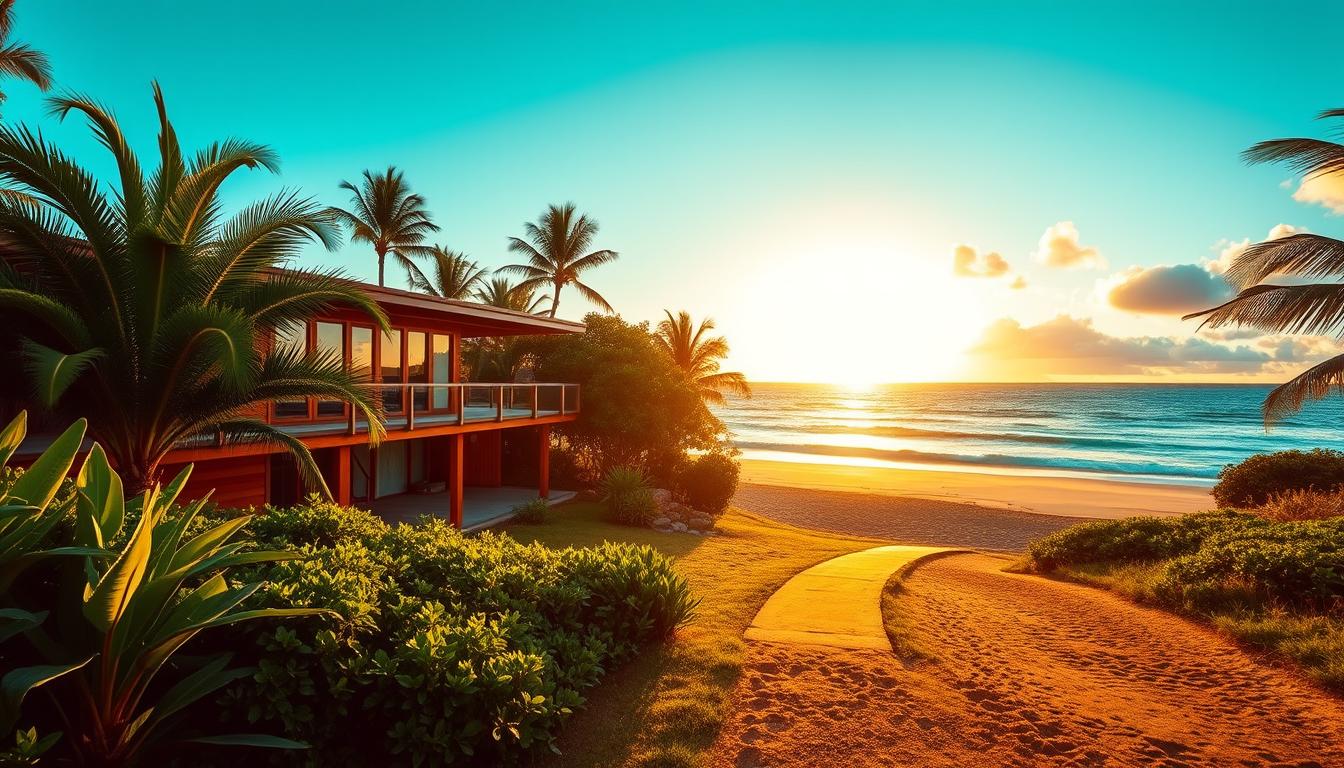If you’re planning a trip to Hawaii, it’s important to know how to navigate the islands and make the most of your time there. With a variety of transportation options available, from interisland flights to public buses and car rentals, getting around Hawaii is easier than you might think.
In this comprehensive guide, we’ll provide you with all the information you need to know about transportation options in Hawaii. Whether you’re looking for travel tips, advice on getting around Honolulu or Oahu, or a complete Hawaii transportation guide, we’ve got you covered.
Key Takeaways:
- Plan ahead and book interisland flights in advance for the best fares and availability.
- Consider taking the interisland ferry between Lahaina and Lana’i for a scenic option.
- Public transportation options vary by island, with TheBus being the most extensive on O’ahu.
- Renting a car offers freedom and flexibility to explore beyond the main towns and resorts.
- Consider using taxis and ride-sharing services for airport transfers and local travel.
Interisland Flights: The Key to Island Hopping
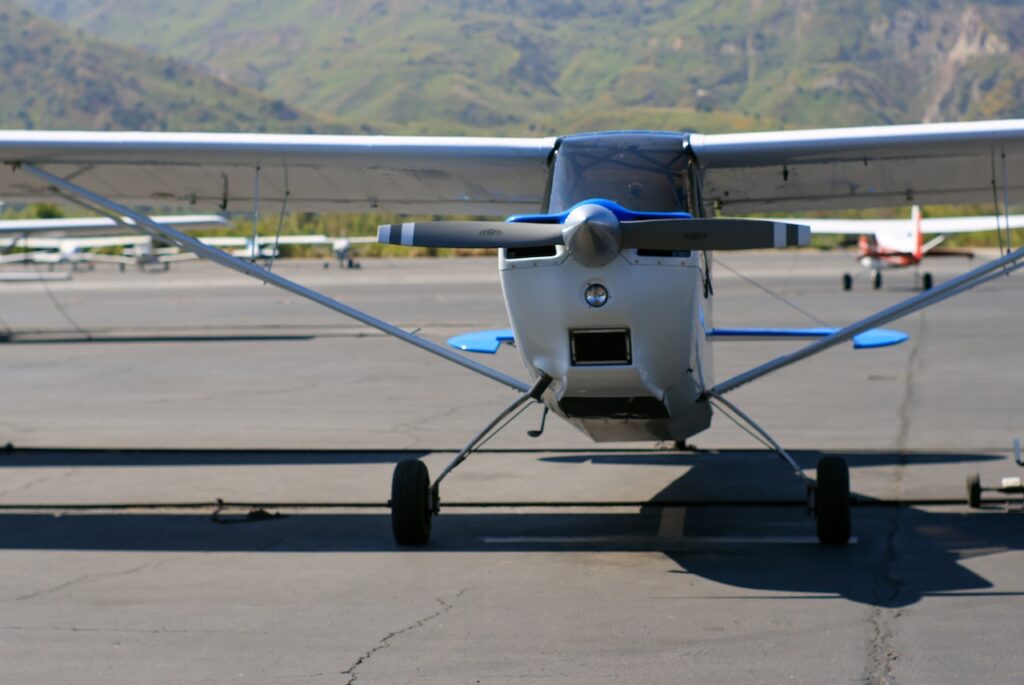
Interisland flights are the most common and convenient way to travel between the Hawaiian islands. With frequent daily flights, travelers can easily hop from one island to another and explore the unique attractions and landscapes each island has to offer.
The major airlines that operate interisland flights in Hawaii include Hawaiian Airlines, Southwest Airlines, and Mokulele Airlines. These airlines connect the major airports in Honolulu, Maui, Kona, Hilo, and Kaua’i, ensuring easy access to popular destinations. The flights are relatively short, typically lasting around 30-45 minutes, allowing travelers to maximize their time on each island.
When planning your interisland flights, it’s recommended to book in advance to secure the best fares and availability. Fares for interisland flights start at $50 for advance bookings, making them an affordable option for island hopping adventures. Booking early also gives you the flexibility to choose flight times that fit your schedule and allows you to plan your itinerary seamlessly.
To make the most of your interisland flights, it’s important to be aware of the baggage policies and restrictions of each airline. Some airlines may have limitations on the number and size of bags you can bring, so it’s essential to review the specific guidelines before your trip. By planning ahead and taking advantage of interisland flights, you can easily explore multiple Hawaiian islands and experience the diverse beauty of Hawaii.
Interisland Flight Options and Fares
| Airline | Destinations | Fares (Starting at) |
|---|---|---|
| Hawaiian Airlines | Honolulu, Maui, Kona, Hilo, Kaua’i | $50 |
| Southwest Airlines | Honolulu, Maui, Kona, Hilo | $50 |
| Mokulele Airlines | Honolulu, Maui, Kona, Hilo, Kaua’i | $50 |
Note: Fares are subject to change and may vary based on booking date, time, and availability.
Exploring by Ferry: A Scenic Option
While interisland flights are the most common way to travel between the Hawaiian islands, there is also an option to explore the islands by ferry. While not as widespread as flights, there is one ferry route available between Lahaina on Maui and Lana’i. This scenic ferry service operates several times a day and offers travelers a unique way to experience the beauty of the Hawaiian coast. The ferry journey provides picturesque views of the ocean, and if you’re lucky, you may even spot dolphins or whales along the way.
However, it’s important to note that there are no interisland ferries connecting other islands in Hawaii. The route between Lahaina and Lana’i is the only available option. It’s also worth mentioning that Norwegian Cruise Line offers seven-day cruises that visit multiple Hawaiian islands. These cruises depart from Honolulu, providing a convenient option for exploring the islands without the need for individual interisland segments.
Interisland Ferry Route: Lahaina to Lana’i
If you’re interested in taking the ferry from Lahaina to Lana’i, here is some essential information:
| Ferry Operator | Frequency | Duration | Fare |
|---|---|---|---|
| Lahaina-Lana’i Ferry | Several times a day | Approximately 45 minutes | Adult: $30 one-way, $60 round-trip Child (2-11 years): $20 one-way, $40 round-trip |
These ferries operate frequently throughout the day, providing flexibility for travelers. The journey between Lahaina and Lana’i takes approximately 45 minutes, allowing you to enjoy the scenic views of the coastline. The ferry fares are relatively affordable, making it an accessible option for those looking to explore beyond Maui. It’s always recommended to check the ferry schedule in advance and make a reservation if possible to secure your preferred travel time.
With the interisland ferry route between Lahaina and Lana’i, travelers can enjoy a scenic and leisurely journey between the Hawaiian islands. Whether you’re looking to experience the charm of Lana’i or simply enjoy the breathtaking views of the coastline, the ferry provides a unique way to explore the islands beyond traditional flights.
Public Transportation: Bus Options and Limitations
Exploring the Hawaiian islands using public transportation is a convenient and cost-effective option for many travelers. While public bus services are available on the larger islands, it’s essential to understand the limitations and plan accordingly.
On O’ahu: TheBus
TheBus is the most extensive public bus service in Hawaii, offering frequent and affordable transportation options on the island of O’ahu. It has an extensive network of routes that can take you to popular tourist areas such as Waikiki and Pearl Harbor.
With the regular and reliable service, it’s easy to navigate O’ahu using TheBus. The fares are reasonable, starting at $2.50 for a one-way trip, and there are various pass options available for those who plan to use public transportation frequently during their stay.
However, it’s important to note that while TheBus provides comprehensive coverage on O’ahu, public bus systems on other islands are more limited and primarily designed for resident commuters.
Public Bus Services on Other Islands
On Maui, the Maui Bus offers transportation services, but it is important to note that it does not serve destinations like Hana and Haleakalā National Park. The bus service primarily focuses on connecting the main towns and resorts around the island.
The Big Island has the Hele-On Bus, which has limited schedules and primarily serves main towns. It is not the most convenient option for accessing popular tourist spots or remote areas on the island.
Kaua’i also has a bus service, known as the Kaua’i Bus, which connects the main towns on the island. However, it does not reach popular tourist spots like the Na Pali Coast or Waimea Canyon.
When relying on public transportation on these islands, it’s important to check bus schedules and routes in advance to ensure that you can access the destinations you want to visit. It may be necessary to consider alternative transportation options like rental cars or organized tours to reach specific tourist attractions.
| Island | Public Bus Service | Limitations |
|---|---|---|
| O’ahu | TheBus | Comprehensive coverage; frequent and affordable |
| Maui | Maui Bus | Excludes destinations like Hana and Haleakalā National Park |
| The Big Island | Hele-On Bus | Limited schedules; primarily serves main towns |
| Kaua’i | Kaua’i Bus | Does not reach popular tourist spots |
Renting a Car: Freedom to Explore
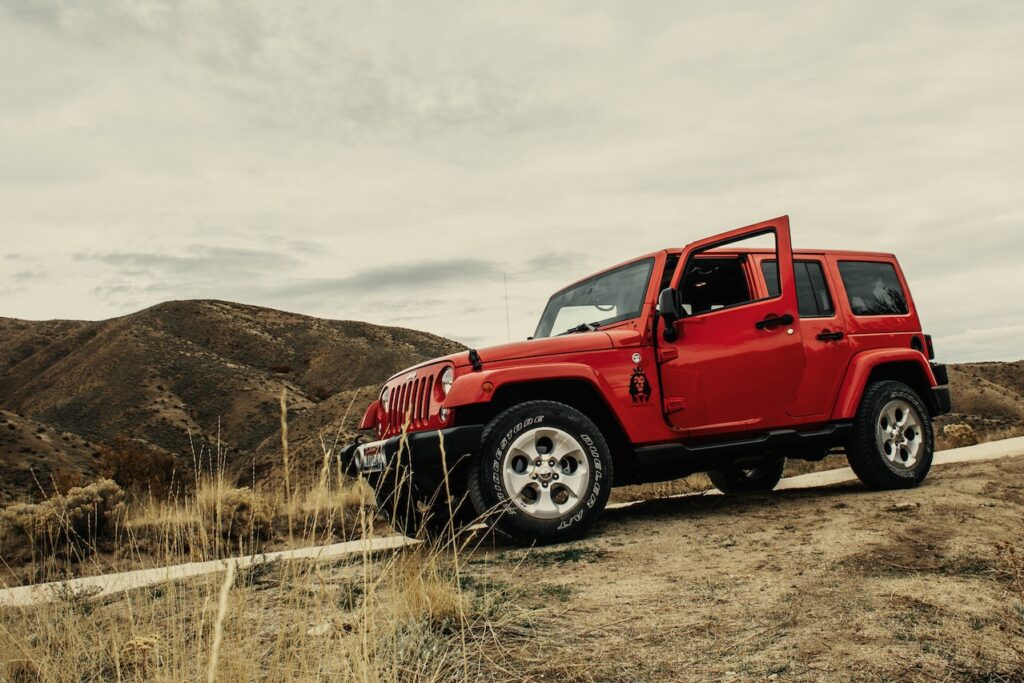
Renting a car is a popular option for travelers looking to explore the Hawaiian islands at their own pace. With numerous rental car companies available, including major brands like Hertz, Avis, and Enterprise, it’s easy to find a vehicle that suits your needs. Whether you’re heading to Honolulu for a city adventure or planning to drive along the scenic Road to Hana in Maui, having a car gives you the freedom to go wherever your heart desires.
When renting a car in Honolulu, you’ll find that there are several options conveniently located at the airport, making it easy to pick up your vehicle upon arrival. However, it’s important to note that rates can be higher at smaller airports and on islands like Lana’i and Moloka’i. To ensure you get the best deal, it’s recommended to book your rental car in advance and compare prices from different companies. Additionally, renting a 4WD vehicle can be a great option if you plan on exploring off-road areas or visiting destinations with rough terrain.
Before setting off on your Hawaiian adventure, it’s crucial to familiarize yourself with the road conditions and driving rules in Hawaii. While most roads are well-maintained, some areas may have unpaved roads or narrow lanes, requiring extra caution. It’s also important to note that Hawaii has strict laws against distracted driving, including the use of handheld devices while behind the wheel. Be sure to follow these rules and stay focused on the road to ensure a safe and enjoyable trip.
| Rental Car Companies in Hawaii | Main Locations | Contact Information |
|---|---|---|
| Hertz | Honolulu, Maui, Kona, Hilo, Lihue | www.hertz.com |
| Avis | Honolulu, Maui, Kona, Hilo, Lihue | www.avis.com |
| Enterprise | Honolulu, Maui, Kona, Hilo, Lihue | www.enterprise.com |
In conclusion, renting a car in Hawaii provides you with the freedom and flexibility to explore the islands on your own terms. Whether you’re seeking adventure in the lush rainforests, chasing waterfalls, or simply cruising along the breathtaking coastal highways, having a rental car allows you to make the most of your Hawaiian vacation. Just remember to book in advance, familiarize yourself with local driving rules, and enjoy the journey as you discover the beauty and charm of the Hawaiian islands.
Mopeds and Motorcycles: Limited Options
If you’re looking for a unique and adventurous way to get around Hawaii, renting a moped or motorcycle could be an option. While not as common as car rentals, there are rental businesses in some resort areas that offer these vehicles for exploring the islands.
When it comes to renting mopeds and motorcycles in Hawaii, there are a few things to keep in mind. Firstly, rates for these rentals can be expensive compared to car rentals. Additionally, there are age restrictions in place for renting these vehicles. In Hawaii, the minimum age for renting a moped is 16, with a valid driver’s license. For motorcycles, the minimum age is 21.
It’s also important to be aware of any restrictions that may apply to moped rentals. State law in Hawaii places certain limitations on the use of mopeds, such as riding solo and avoiding sidewalks and freeways. These regulations are in place to ensure the safety of riders and pedestrians.
Comparing Moped and Motorcycle Rental Prices
| Rental Type | Average Daily Price | Average Weekly Price |
|---|---|---|
| Moped | $60 | $350 |
| Motorcycle | $100 | $600 |
As shown in the table above, the average daily price for renting a moped in Hawaii is around $60, while the average weekly price is approximately $350. On the other hand, renting a motorcycle comes at a higher cost, with an average daily price of $100 and an average weekly price of $600.
Whether you choose to rent a moped or a motorcycle, it’s always important to prioritize safety. Make sure to wear appropriate protective gear, such as helmets and closed-toe shoes, and familiarize yourself with the local traffic laws and regulations. By following these guidelines, you can enjoy a thrilling and memorable experience exploring the Hawaiian islands on two wheels.
Taxis and Ride-Sharing Services: Airport Transfers and Local Travel
Hawaii offers various transportation options for travelers, and taxis and ride-sharing services play a key role in providing convenient airport transfers and local travel. Whether you’re arriving at the airport and need a quick ride to your hotel or exploring the islands during your stay, taxis and ride-sharing services like Uber and Lyft are readily available.
Taxi Services in Hawaii
Taxis can be found at major airports, hotels, and resorts, making them a convenient option for airport transfers. In Hawaii, taxi rates are metered and vary by county, so it’s important to check the rates in the area you’re visiting. Taxis in Hawaii offer reliable transportation and are operated by licensed drivers who are knowledgeable about the local roads and attractions.
Ride-Sharing Services in Hawaii
Uber and Lyft are popular ride-sharing services available in Hawaii, providing an alternative to traditional taxis. Uber operates on O’ahu, while Lyft is available on the larger islands. These services can be conveniently booked through their respective apps, allowing you to easily request a ride and track the driver’s arrival. Rates and availability may vary, especially in more remote areas, so it’s recommended to check the app for the latest information.
Whether you choose a taxi or a ride-sharing service, both options offer flexibility and convenience for getting around Hawaii. They provide a reliable way to reach your destination, whether it’s a local attraction, restaurant, or shopping center. With taxis and ride-sharing services, you can enjoy the convenience of door-to-door transportation and focus on enjoying your time in beautiful Hawaii.
| Service | Availability | Rates |
|---|---|---|
| Taxis | Available at major airports, hotels, and resorts | Metered rates vary by county |
| Uber | Operates on O’ahu | Vary by distance and demand |
| Lyft | Available on larger islands | Vary by distance and demand |
Cycling: Exploring Hawaii’s Scenic Trails and Bike Rentals
Cycling is an eco-friendly and exhilarating way to explore the beauty of Hawaii’s islands. With its stunning landscapes and scenic trails, biking in Hawaii offers a unique experience for adventure enthusiasts and nature lovers. Whether you’re an experienced cyclist or a casual rider, there are options for everyone to enjoy the outdoors and take in the breathtaking views.
Hawaii offers a variety of biking trails, ranging from easy coastal paths to challenging mountain routes. Some popular biking trails include the Kauai Ke Ala Hele Makalae Path, which spans over 17 miles on the east side of Kauai and offers picturesque coastal views. On Oahu, the Maunawili Trail in the Ko’olau Range is a favorite among mountain bikers, providing a thrilling ride through lush forests and offering glimpses of cascading waterfalls.
If you don’t have your own bike, don’t worry – bike rentals are widely available in tourist resorts throughout the islands. Rental shops offer a range of bike types, including mountain bikes, road bikes, and even electric bikes for those who prefer an extra boost. Prices vary depending on the duration of the rental and the type of bike, with hourly, daily, and weekly rates available.
To ensure a safe and enjoyable biking experience, it’s essential to prioritize cycling safety. Remember to always wear a helmet, use appropriate safety gear, and follow the local traffic laws. When exploring new trails, consider joining a guided bike tour or hiring a local guide who can provide valuable insights and take you to the best hidden spots.
| Trail Name | Location | Difficulty | Highlights |
|---|---|---|---|
| Kauai Ke Ala Hele Makalae Path | Kauai | Easy | Coastal views |
| Maunawili Trail | Oahu | Intermediate | Forest landscapes and waterfalls |
| Haleakala Downhill | Maui | Advanced | Stunning views of the volcano |
Biking Safety Tips:
- Always wear a helmet and use appropriate safety gear.
- Observe local traffic laws and be aware of your surroundings.
- Stay hydrated and pack snacks for longer rides.
- Check your bike’s condition before starting your ride.
- Carry a repair kit and basic tools for any necessary adjustments.
- Let someone know your planned route and estimated return time.
Accessible Transportation: Meeting Special Needs
Hawaii is committed to providing accessible transportation options for travelers with special needs. The state ensures that sidewalks and curbs have ramps for easy wheelchair access, allowing individuals with mobility challenges to navigate the islands with greater ease. Some beaches even have ramps leading to the water, making it possible for wheelchair users to enjoy the beautiful Hawaiian coastline.
Public buses in Hawaii are equipped with accessibility features, including ramps and designated seating areas for individuals with disabilities. This makes it possible for everyone to use public transportation and explore the islands. Additionally, major car rental companies offer accessible vehicles to accommodate individuals with different mobility requirements.
Visitors with disabilities can also benefit from the existing disability parking system in Hawaii. Those who have valid disability parking placards from their home state can use them to access accessible parking spots throughout the islands. However, it’s important to familiarize yourself with the specific regulations and parking restrictions that apply in each county.
Guide Dog Regulations in Hawaii

Guide dogs are essential companions for individuals with visual impairments or other disabilities. In Hawaii, guide dogs are not subject to quarantine requirements, allowing individuals to travel with their service animals without additional obstacles. However, it’s crucial to adhere to the regulations set by the Hawaii Department of Agriculture.
When traveling with a guide dog in Hawaii, it’s essential to carry the necessary documentation, such as the dog’s health certificate and proof of current vaccinations. Additionally, it’s important to observe proper etiquette and guidelines when bringing a guide dog into public spaces, including hotels, restaurants, and other establishments.
| Accessible Transportation Options in Hawaii | Available Features | Restrictions |
|---|---|---|
| Public Buses | Ramps, designated seating | Varies by island; limited accessibility in certain areas |
| Car Rentals | Accessible vehicles available | Availability may vary; advanced booking recommended |
| Disability Parking | Accessible parking spots throughout the islands | Specific regulations vary by county |
| Guide Dogs | No quarantine requirements | Proper documentation and adherence to regulations |
Planning Your Island-Hopping Adventure: Choosing Islands and Attractions
When embarking on an island-hopping adventure in Hawaii, it’s essential to plan your itinerary to make the most of your trip. With so many beautiful islands to choose from and a plethora of attractions to explore, having a clear plan will ensure you don’t miss out on any must-see sights.
Start by considering which Hawaiian islands align with your interests and preferences. Oahu, known for its vibrant city life, offers attractions like Pearl Harbor and the iconic Waikiki Beach. Maui boasts the scenic Road to Hana and the breathtaking Haleakala National Park. The Big Island is home to the awe-inspiring Hawaii Volcanoes National Park, while Kauai showcases the stunning Napali Coast and the majestic Waimea Canyon.
Once you’ve decided on the islands you want to visit, research the attractions and activities each one has to offer. From hiking to water sports, cultural experiences to scenic drives, each island presents a plethora of opportunities for adventure and relaxation. Create a list of must-see attractions on each island and prioritize based on your interests and available time.
| Island | Must-See Attractions |
|---|---|
| Oahu | Pearl Harbor, Waikiki Beach, Diamond Head |
| Maui | Road to Hana, Haleakala National Park, Lahaina |
| Big Island | Hawaii Volcanoes National Park, Mauna Kea, Kona Coffee Plantations |
| Kauai | Napali Coast, Waimea Canyon, Hanalei Bay |
By carefully planning your island-hopping adventure and choosing the islands and attractions that align with your interests, you can create an unforgettable Hawaiian vacation filled with incredible experiences and memories.
Cost and Time Considerations: Making the Most of Your Island-Hopping Adventure
When planning an island-hopping adventure in Hawaii, it’s essential to consider both the cost and time involved to ensure you make the most of your trip. Here are some key factors to keep in mind:
Cost of Island Hopping in Hawaii
Island hopping in Hawaii can be an affordable travel option, especially if you take advantage of interisland flights. These flights typically start at around $39 each way, and if you plan in advance and book early, you may be able to find even better deals. Additionally, some airlines offer frequent flyer programs or travel rewards programs that allow you to accumulate miles and redeem them for discounted or free flights. By leveraging these programs, you can save money and make island hopping more budget-friendly.
Time Considerations for Island Hopping
While island hopping in Hawaii is relatively quick due to the short flight times between islands (around 30-45 minutes), it’s crucial to consider the time needed for airport procedures. Arriving at the airport early, going through security, and allowing for any potential delays is essential to ensure a smooth and stress-free travel experience. Additionally, some islands may have limited flight options, so it’s important to check schedules and plan accordingly. By allowing enough time for transportation to and from the airports, as well as any necessary layovers, you can maximize your time on each island.
Airline Miles and Travel Rewards Programs
Utilizing airline miles and travel rewards programs can significantly enhance your island-hopping adventure in Hawaii. By joining airline rewards programs, you have the opportunity to accumulate miles through frequent travel or specific credit card spending. These miles can then be redeemed for discounted or free flights, allowing you to save money on interisland travel. Some programs also offer additional perks such as priority boarding, access to airport lounges, and the ability to redeem miles for other travel expenses like hotel stays or car rentals. By taking advantage of these programs, you can make your island hopping experience in Hawaii even more rewarding.
| Cost and Time Considerations: Making the Most of Your Island-Hopping Adventure |
|---|
| Cost of Island Hopping in Hawaii |
| – Interisland flights start at $39 each way |
| – Book in advance and take advantage of frequent flyer programs for discounted or free flights |
| Time Considerations for Island Hopping |
| – Short flight times (around 30-45 minutes) between islands |
| – Allow enough time for airport procedures and potential delays |
| Airline Miles and Travel Rewards Programs |
| – Join airline rewards programs to accumulate miles through frequent travel or credit card spending |
| – Redeem miles for discounted or free flights, priority boarding, and other travel perks |
By considering the cost of island hopping, managing your time effectively, and utilizing airline miles and travel rewards programs, you can make the most of your island-hopping adventure in Hawaii. Whether you’re on a budget or looking to enhance your travel experience, these factors will help you plan a successful and enjoyable trip.
Benefits of Airline Miles: Saving Money and Gaining Perks
Using airline miles for your interisland flights in Hawaii can bring multiple benefits. First and foremost, it can help save money on flights, allowing you to redeem your accumulated miles for discounted or even free flights. Accumulating airline miles through frequent travel can also lead to additional perks such as upgrades and priority boarding, enhancing your travel experience. Additionally, airline miles can be versatile and used for other travel-related expenses like hotel stays and car rentals, making your entire vacation more affordable. Consider joining airline rewards programs and accumulating miles for optimal savings and benefits.
One of the major advantages of using airline miles for interisland flights in Hawaii is the opportunity to save money. By redeeming your accumulated miles, you can significantly reduce the cost of your flights, ultimately helping you stay within your travel budget. Whether you’re a frequent traveler or have been accumulating miles through credit card rewards, using them for interisland travel can be a smart and cost-effective choice.
In addition to cost savings, using airline miles can also provide you with various perks and benefits. Many airlines offer loyalty programs that reward frequent flyers with exclusive privileges such as upgrades to business or first class, access to airport lounges, priority boarding, and extra baggage allowances. These perks can greatly enhance your travel experience, providing you with added comfort and convenience as you explore the Hawaiian islands.
Furthermore, airline miles are not limited to flights alone. They can also be used to cover other travel expenses such as hotel stays, car rentals, and even vacation packages. This flexibility allows you to maximize the value of your miles and make your entire Hawaiian vacation more affordable. By strategically combining your miles with other travel rewards, you can create a trip that fits your budget and preferences.
| Benefits of Airline Miles | Perks of Airline Miles |
|---|---|
| 1. Saving money on interisland flights | 1. Upgrades to business or first class |
| 2. Flexibility to use miles for other travel expenses | 2. Access to airport lounges |
| 3. Cost-effective choice for frequent travelers | 3. Priority boarding |
| 4. Enhanced travel experience | 4. Extra baggage allowances |
Overall, utilizing airline miles for your interisland flights in Hawaii can be a smart and rewarding decision. It allows you to save money, gain valuable perks, and maximize the value of your miles. By joining airline rewards programs and strategically accumulating miles, you can make your island-hopping adventure in Hawaii even more enjoyable and affordable.
Explore the Beauty of Hawaii
Embark on a journey to explore the stunning beauty of Hawaii, a tropical paradise that offers a vacation like no other. Immerse yourself in the breathtaking landscapes, from the pristine beaches and lush jungles to the majestic volcanoes and cascading waterfalls. Hawaii’s natural wonders are sure to leave you in awe.
While experiencing the beauty of Hawaii, don’t miss out on the opportunity to immerse yourself in the rich Hawaiian culture. Engage in traditional activities like hula dancing, lei-making, and ukulele playing. Indulge in the delicious local cuisine, which combines flavors from various ethnic influences. Hawaii’s cultural heritage is a vibrant tapestry waiting to be discovered.
Make the most of your Hawaiian vacation by planning your itinerary with our comprehensive Hawaii vacation guide. Discover the best of Hawaii on each island, from the iconic attractions like Pearl Harbor on Oahu and Haleakala National Park on Maui to the stunning natural wonders of the Napali Coast on Kauai and the Hawaii Volcanoes National Park on the Big Island. There is something for everyone in this tropical paradise.
So, whether you’re seeking adventure, relaxation, or a cultural experience, Hawaii has it all. Explore the beauty of the islands, immerse yourself in the Hawaiian culture, and create lasting memories in this idyllic tropical paradise. Plan your dream vacation to the best of Hawaii and get ready for an unforgettable journey.
FAQ
What is the most common and convenient way to travel between the Hawaiian islands?
The most common and convenient way to travel between the Hawaiian islands is by interisland flights.
Which airlines offer interisland flights in Hawaii?
Hawaiian Airlines, Southwest Airlines, and Mokulele Airlines offer interisland flights connecting the major airports in Honolulu, Maui, Kona, Hilo, and Kaua’i.
Are there ferry services available between the Hawaiian islands?
While there is one ferry route between Lahaina on Maui and Lana’i, there are no ferries between other islands in Hawaii.
Can I take a cruise to visit multiple Hawaiian islands?
Norwegian Cruise Line offers seven-day cruises that visit multiple Hawaiian islands, departing from Honolulu. However, these cruises are round-trip from Honolulu and do not offer individual island segments.
Is there public bus service available in Hawaii?
Public bus services are available on the larger islands of Hawaii, with TheBus being the most extensive service on O’ahu. Maui Bus provides service on Maui, while the Big Island’s Hele-On Bus and Kaua’i Bus connect the main towns on their respective islands.
Should I rent a car in Hawaii?
Renting a car is highly recommended for exploring beyond the main towns and resorts in Hawaii, as it allows you the freedom to explore at your own pace and access more remote and scenic areas.
Can I rent a moped or motorcycle in Hawaii?
Moped and motorcycle rentals are available in some resort areas in Hawaii, but rates can be expensive and there are age restrictions for renting.
Are taxis and ride-sharing services available in Hawaii?
Taxis and ride-sharing services like Uber and Lyft are available in Hawaii for airport transfers and local travel, but rates and availability may vary, especially in more remote areas of the islands.
Is cycling a viable option for getting around in Hawaii?
While cycling is an eco-friendly option for getting around Hawaii, it can be challenging due to narrow roads, heavy traffic, and frequent tropical downpours. Caution should be exercised when cycling on the islands.
Are there accessible transportation options in Hawaii for travelers with special needs?
Yes, Hawaii offers accessible transportation options for travelers with special needs, including wheelchair-accessible buses, accessible rental vehicles, and designated parking spots.
How should I plan my island-hopping adventure in Hawaii?
When planning your island-hopping adventure in Hawaii, consider which islands to visit and the must-see attractions on each island. Researching the attractions and accessibility of each island can help you create an itinerary that suits your preferences.
What are the cost and time considerations for island hopping in Hawaii?
Interisland flights are the cheapest way to travel between the islands, with fares starting at $39 each way. It’s recommended to book in advance to secure the best prices and availability. Keep in mind the short flight times between islands and factor in enough time at the airports.
What are the benefits of using airline miles for interisland flights in Hawaii?
Using airline miles for interisland flights in Hawaii can help save money on flights, provide additional perks like upgrades and priority boarding, and can also be used for other travel-related expenses like hotel stays and car rentals.
Why should I visit Hawaii?
Hawaii is a tropical paradise that offers endless beauty and unique experiences, from stunning beaches and lush jungles to rich culture and warm hospitality. It is a destination that should be on everyone’s travel bucket list.
Aloha! Welcome to our ultimate guide to getting around in Hawaii. Whether you’re a first-time visitor or a seasoned traveler, navigating the beautiful islands of Hawaii can be an adventure in itself. From the bustling streets of Honolulu to the tranquil roads of Lanai, each island offers a unique travel experience. This guide will provide you with all the essential information you need to explore Hawaii like a local.
Go Akamai: Your One-Stop Transportation Resource
When it comes to transportation in Hawaii, Go Akamai is your best friend. This comprehensive resource provides real-time updates on traffic conditions, travel times, and incidents across the islands. It’s like having your own personal traffic reporter, helping you plan your journey and avoid any potential roadblocks. But Go Akamai is more than just a traffic resource. It also provides detailed information on public transportation services, including routes, fares, and schedules. Plus, you’ll find useful information about roadway construction, making it easier to navigate around any ongoing works.
Roadwork and Lane Closures
In Hawaii, paradise and roadwork often go hand in hand. To ensure the safety and smooth flow of traffic, regular maintenance and construction work is carried out on state roads. These planned closures are published every Friday and can be accessed here. By staying informed, you can plan your travel itinerary accordingly and avoid getting caught in traffic. For live, real-time traffic information on Oahu’s major arteries, remember to check GoAkamai.org.
Flying is a common way to travel between the islands of Hawaii, and each island is served by one or more airports. Here’s a more detailed look at the airports you might use during your visit:
- Oʻahu: Daniel K. Inouye International Airport (HNL) is the largest airport in Hawaii, serving as the main gateway to the islands. Dillingham Airfield (HDH) and Kalaeloa Airport (JRF) are smaller airports primarily used for general aviation and military purposes.
- Island of Hawaiʻi: Ellison Onizuka Kona International Airport (KOA) and Hilo International Airport (ITO) serve the Big Island, with KOA being the primary entry point for visitors. Upolu Airport (UPP) and Waimea-Kohala Airport (MUE) are smaller airports serving the northern part of the island.
- Maui: Kahului Airport (OGG) is the main airport on Maui, while Hana Airport (HNM) and Kapalua Airport (JHM) provide additional options for inter-island travel.
- Kauaʻi: Lihue Airport (LIH) is the main airport on Kaua’i, while Port Allen Airport (PAK) is a general aviation airport.
- Molokaʻi: Molokai Airport (MKK) and Kalaupapa Airport (LUP) serve the island of Moloka’i.
- Lānaʻi: Lanai Airport (LNY) is the only airport on the island of Lanai.
Bus Information
Public transportation is a great way to explore Hawaii while reducing your carbon footprint. Each county operates its own bus system, offering an affordable and convenient way to travel around the islands. You can find detailed information about bus schedules, service disruptions, fees, and routes for each island here. Whether you’re heading to the beach, the mountains, or the local market, the bus system can get you there.
Traffic Safety & Driving Laws
Hawaii’s traffic safety and driving laws are designed to keep everyone safe on the road. Here’s a more detailed look at some of these laws:
- Helmet Laws: Hawaii takes the safety of motorcyclists and cyclists seriously. If you’re under 18 and riding a motorcycle or motor scooter, or under 16 and riding a bicycle, you must wear a helmet. This law is strictly enforced to prevent serious injuries.
- Mobile Electronic Device (Cell Phone) Ban: Distracted driving is a major cause of accidents. To combat this, all counties in Hawaii have enacted laws prohibiting the use of electronic devices while driving. This includes texting, browsing the internet, or even holding your phone while driving.
- Distracted Walking Law (Oʻahu only): In Honolulu, it’s not just drivers who need to pay attention. It’s illegal to cross the street while using your phone or other device, with few exceptions such as dialing 911. This law aims to prevent accidents caused by pedestrians not paying attention to their surroundings.
- Hawaiʻi’s Child Passenger Restraint Law: If you’re traveling with young children, it’s important to know Hawaii’s child passenger restraint laws. All children under age 4 must be restrained in a federally approved child safety seat, and children ages 4 through 7 must ride in a booster seat or car seat any time they are in a vehicle. Non-compliance can result in hefty fines.
- Seat Belt Law: Seat belts save lives, and in Hawaii, it’s the law to buckle up. All front and back seat motor vehicle occupants, both children and adults, must wear their seat belts at all times while driving.
Hawaii is a paradise waiting to be explored, and knowing how to navigate the islands is key to a memorable visit. From understanding the local transportation resources to being aware of the traffic laws, this guide aims to provide you with all the information you need for a smooth Hawaiian journey. So buckle up, enjoy the ride, and let the Aloha spirit guide your travels!

Scott Sweeney is the creator of Virtual Hawaii 360. Scott is a professional marketer and a lifelong Hawaii enthusiast. Scott splits time between Oahu and Dayton, Ohio. In addition to his marketing endevours, he is also a published Ukulele musician.

